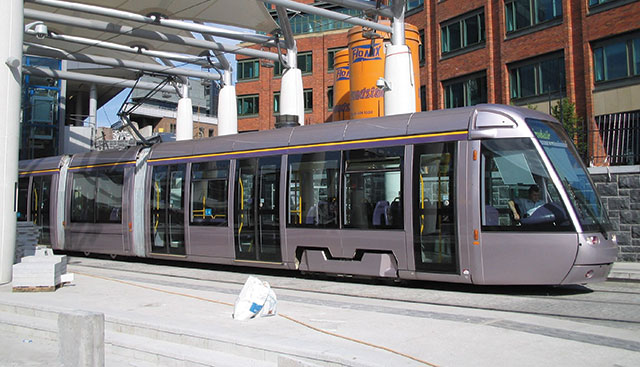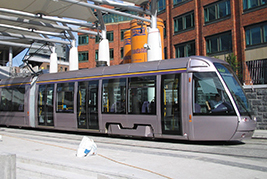Changing behaviour to reduce emissions

Trinity College Dublin’s Brian Caulfield explains the rationale behind Greening Transport’s desire to examine the relationship between public perception and transport emissions.
 Greening Transport’s primary objective is to merge the technical evaluation of the emissions from transport and the improvements in their calculations, with the behavioural changes needed to realise a substantial reduction in emissions. “If you ignore behaviour you are ignoring the problem,” states the project’s director, Brian Caulfield. “We need to understand the behaviour and motivation of people and to date this issue has been ignored.”
Greening Transport’s primary objective is to merge the technical evaluation of the emissions from transport and the improvements in their calculations, with the behavioural changes needed to realise a substantial reduction in emissions. “If you ignore behaviour you are ignoring the problem,” states the project’s director, Brian Caulfield. “We need to understand the behaviour and motivation of people and to date this issue has been ignored.”
This research is different to other projects that look to maintain the status quo in terms of mobility as it seeks to measure how reducing mobility or changing mobility patterns can reduce emissions. It is also seeking to assess how policies of promoting modal shift and sustainable mobility can help reduce emissions.
Driving change
Focusing on how this change might be achieved, Caulfield discusses the concept of car shedding. Car shedding is the process by which individuals are encouraged to ‘shed’ a car in their household and move to one or no cars. “It is not possible for everybody but this research will attempt to understand how the process would work and how we can get people to give up their cars,” says Caulfield. “One of the reasons people are less environmentally friendly in terms of their emissions is because they don’t fully understand the environmental impact of their car usage.”
At the end of last year the team conducted research assessing the most important features of the public’s preferred mode of transport. The research was conducted to gain an appreciation of why the public favoured the car so heavily and how they could be encouraged to give it up. Of the 400 responses the majority of them listed cost and time as key factors, followed by comfort. Environmental friendliness and sustainability are ranked near the bottom in the public’s perception of priorities.
When asked if they would be willing to sell a car that they own or delay buying a new car in favour of taking public transport or cycling if similar costs and travel time could be guaranteed, over 40 per cent of respondents still stated ‘no’. However, 25 per cent said ‘yes’ and 10 per cent said ‘maybe’. With roughly 35 per cent of respondents open to the idea of ditching the car and a further 15 per cent stating they don’t drive, Caulfield has hope that people can be convinced to adopt other methods of transport.
While acknowledging that the project is still in its infancy, Caulfield is certain behavioural changes are a necessity in order to drive down Ireland’s overall transport emissions. “This work will shed some light on the means to change how we use transport and challenge our perceptions on how we use our cars,” he states.
For the research to be successful Caulfield is aware of the need for efficient and effective data to measure transport emissions.
Data requirements
“The data requirements for this project are huge,” admits Caulfield. “We have done some behavioural work but it is the mobility data that is the key consideration. At present data is poor in Ireland, the best data available is from the National Transport Authority but transport data has a number of gaps and there is a lack of linkage between the available data. A lot more should be done to pool this data so that links can be made that would support new research and policy answers.”
With the data available little scenario analysis has been completed to determine the impact a walking or cycling strategy would have on reducing emissions. Focused primarily on assessing how to drive a quantifiable change in the use of the car, Caulfield states that better national travel survey data is required with common definitions shared between data sets. At present the data held by the Central Statistics Office and the National Transport Authority have two different definitions and as a consequence the data cannot be merged.
The output from this project, which started last March and will run until March 2018, will be in the form of academic papers and publications. It will look at policy recommendations on how to reduce land transport related emissions and also make recommendations on the policies required to reduce land transport emissions. The research has five work packages. The first is concerned with the management of the research, the second is a review of the data models available to the team and a comparison of some other models across Europe.
The third package is an examination of smarter travel options and how they can be used to reduce emissions. The fourth package examines the emissions reductions from the changes in the private car fleet and the public transport bus fleet while the fifth package is concerned with measuring the fiscal changes in promoting sustainable care use.
With regards to transport models, the research will focus on the NTA model, the UCD model, some models from the UK and others from the Netherlands and Sweden. The emissions model the research will use is COPERT4. This emissions model is an average speed model that calculates emissions for both light and heavy vehicles. It has a different set of emission targets for urban roads, rural roads and highways. However, it does not calculate emissions for new technology vehicles, nor does it calculate non-exhaust particulate matter emissions.
Caulfield explains that the team have decided to adopt this model as it calculates emissions of all pollutants from road transport, it covers all vehicle classes and can be used to calculate and project transportation emissions to 2030 as well as providing a user-friendly user interface. “The data we have from the NTA will fit into this model and will allow us to predict emissions into the future. We will also be able to look at more than just CO2 and this is important when working out the benefits that we are trying to estimate,” he concludes.





